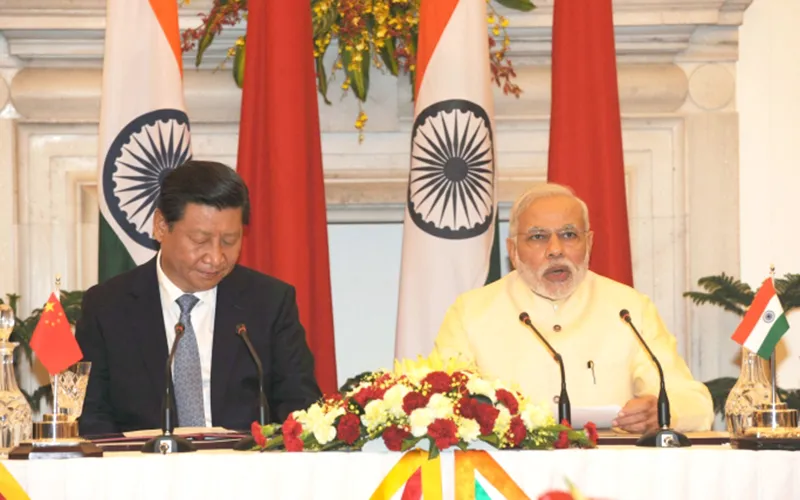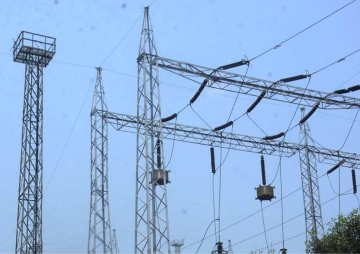India and China are the world's oldest civilizations and have shared relations for as long as 2,000 years. Starting their modern relation in 1950 which has been volatile because of border disputes, post-colonial bonhomie and Asian solidarity, 1980s was the period when both countries made an attempt to give a new start to their diplomatic and economic ties. In 1984, both the countries signed a Most Favoured Nation Agreement (MFN) and 2008 saw China emerge as India's largest trading partner, thereby giving boost to their strategic and military relations as well. The trade level between both the countries increased from $2.92 billion in 2000 to $ 74 billion in 2011 and expected to touch $ 100 billion by 2015.
With growth in trade, investments between both the countries witnessed a spurt as well. China's accumulated investment in India reached US $ 57.6 million while India's investment in China reached US $ 44.2 million by December 2011. To further add to the good signs, the recent establishment of New Development Bank -- an initiative by the BRICS -- has been a landmark step which is likely to bring upsurge in the political and economic ties between both the countries. With the headquarters of Bank in Shanghai, and its Presidency with India, the New Development Bank is likely to enhance the engagements and exchanges between both the countries.
However, economic ties, which are the key driver of good Sino- India ties, came into trouble in 2012 when the bilateral trade in goods fell by almost 10 per cent from 2011. India's trade imbalance with China has shot up the trade deficit which widened from $28 billion in 2010-11 to $ 40.8 billion in 2012-12. Similarly, on the security front, the situation between both the countries has always remained tensed because of the border disputes. Absence of trust in each other is another major problem between the countries. To sum up the relationship is characterised by 3Cs; Cooperation, Competition and Conflict.
However, given the economic size of both the countries, India and China relations hold significance as both countries are Asian powerhouses. The arrival of Chinese President on September 17, in Ahmedabad, on the occasion of Mr. Modi's Birthday was a celebrating time for India, as Mr. Xi, as expected, came up with a bundle of gifts and promises which added a new chapter to India-China relations. The first day of the visit saw the signing of three MoUs with Gujarat, with $ 400 million to be pumped into the country. The first agreement was signed between China Development Bank and Industrial Extension Bureau of Gujarat government for developing industrial parks in the state. Another pact was signed between China's Guangdong province and the Gujarat government for developing a 'sister province' which covered wide spectrums including trade and industry, environmental studies, science and technology waste water management, sports and infrastructure etc. And the third MoU was between Ahmadabad Municipal Corporation and Guangzhou for knowledge-sharing on various issues like health, culture, science and technology, environment and education among others.
India's Commerce Minister Nirmala Sitharaman also signed a 'Five-Year Trade and Economic Development Plan' with Chinese counterpart Gao Hucheng with a view to improve trade balance. The agreement also laid down a roadmap to promote sustainability and lessen the bilateral imbalance, as the trade gap stood at US$ 35 billion in favour of China and also proposed to strengthen investment cooperation in order to realise $20 billion investment from China in the coming 5 years as promised by the Chinese President. The two Commerce Ministers also signed the minutes of the 10th session of India- China Economic Group which was held in Beijing. Also measures to enhance the market accessibility of Indian goods such as pharmaceuticals, farming and fuel products in China were discussed. The Chinese President also had US$ 7 billion in store for investments in industrial parks in Pune and Gandhinagar. Indian and Chinese companies have also signed preliminary deals worth more than $3bn in aircraft leasing and telecoms, among other sectors. Both sides also focussed on increasing co-operation in trade, space exploration and civil nuclear energy.
However, the border issues remain contentious. As India does not confirm with Beijing's stand on Arunachal Pradesh, she has sent out a strong message by not signing the proposed Visa Liberalisation agreement. China, which is pumping money into India, was keen to sign the agreement as this would have made the professional and entrepreneur's movement into India much easier.
India under Prime Minister Narendra Modi has tried its multi-pronged strategy by directing its efforts toward look East-Policy and enhancing its partnership with Japan and U.S. as evident from the PM's recent visits to Japan. Seeking India engaging and playing an important role on the global stage, the visit led U.S to endorse India-Japan Strategic partnership to strengthen into trilateral cooperation to address the issues related to security, economic and proliferation and energy. Some see this trilateral partnership as a move taken against the rising diplomacy of China. Amidst the discomfort from the intimacy between Modi-Abe, it was expected that Chinese President Xi Jinping will utilise every single minute of his stay in India in letting "no stone unturned" to make India-China relations better. However, although some cash exchanges were made, the long battle over border disputes was not addressed.
Undoubtedly, PM Modi has succeeded in adding a new zest and meaning to India-China relations with the visit of the Chinese President. However, it is evident that the full potential in trade and other areas of cooperation would not be realised unless peace and tranquillity is restored on the border. Realising this, the Indian PM has urged the Chinese for a speedy and early resolution to the boundary disputes.
(The writers are research scholars with Observer Research Foundation, Delhi)
The views expressed above belong to the author(s). ORF research and analyses now available on Telegram! Click here to access our curated content — blogs, longforms and interviews.




 PREV
PREV

